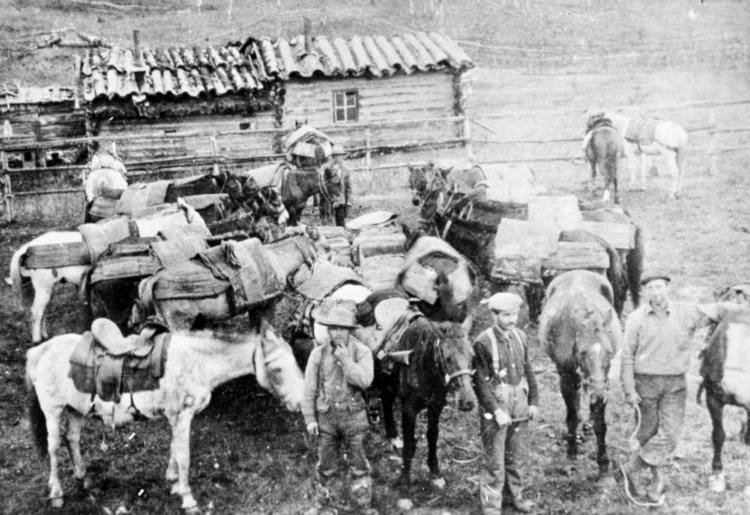By 1844, artist-turned-inventor Samuel F.B. Morse had developed a device capable of transmitting electrical signals vast distances along a metal wire. Known as telegraphy, this ground-breaking technology revolutionized communications, allowing people living thousands of miles apart to ‘talk’ to each other in Morse code.
It wasn’t long before other forward thinkers saw the device’s potential to connect not just communities, but continents. In July 1858, Cyrus W. Field’s Atlantic Telegraph Company finally laid the first undersea cable across the Atlantic, and industrialists on both continents were confident that the endeavour had ushered in a new age.
Their optimism proved short-lived, because by September, the cable had stopped functioning. Yet others, including American entrepreneur Perry Collins, saw Field’s initial failure as an opportunity.
Collins convinced Hiram Sibley, head of the Western Union Telegraph Company, to construct an overland telegraph line from San Francisco (Western Union’s Pacific terminus) to Alaska, and from there across the Bering Strait to Russia. The two men promoted the project worldwide, and on July 1, 1864, President Abraham Lincoln granted the Sibley’s Western Union Telegraph Company a right-of-way from San Francisco to the British Columbia border.
The colony of B.C. enthusiastically endorsed the new telegraph project. New Westminster was chosen as the telegraph’s B.C. terminus, and construction crews began stringing line north along the Cariboo Wagon Road to Quesnel in May 1865. The onset of winter halted work, but in the spring of 1866, it started northwest from Quesnel in earnest. By the end of that year, the line had reached the Bulkley and Kispiox Rivers.
That’s when fate intervened. In 1866, the second trans-Atlantic cable was successfully laid across the Atlantic, restoring telegraph service between London and North America – and in the process, making the Western Union project obsolete.
The Collins Overland Telegraph, which cost investors approximately $3 million before work ground to a halt north of Hazelton, was considered an abject economic failure. However, it did leave behind infrastructure and a trail that others could follow to northern B.C.
The discovery of gold in the Yukon in 1896 created renewed demand for a communications link between Canada’s Far North and its urban centres in the south. The result was the Yukon Telegraph, which followed much of the old Collins route before striking northward from the Hazelton area toward the Yukon.
Cabins were constructed along sections of the telegraph line to house the men required to keep it operating, one of them near the present site of Burns Lake’s sewage lagoons.
Malcolm McKinley was one of this area’s early telegraph operators, and George ‘Boer’ Wallace – the South African after whom Boer Mountain is named – reportedly served as his lineman for a time.
According to some of this area’s old-timers, McKinley and Wallace didn’t get along. Apparently, their mutual dislike eventually reached a level that civil communication between them ceased.
At that point, it’s said, McKinley devised a system whereby the two men could avoid direct contact. Whenever the telegraph connection was broken, McKinley would nail a red arrow to a tree pointing toward the direction of the problem. An arrow pointing west indicated no signals were coming from Hazelton, and Wallace should head in that direction with his tools; one pointing the opposite way suggested the line needed Wallace’s attention somewhere between McKinley’s cabin and the next one to the east.
For a time, the system allegedly worked well for both men. Eventually, though, McKinley became so annoyed with Wallace that he pointed the arrow east or west each morning even when the telegraph line was operating properly.
McKinley’s cabin, which became a favourite stopping point for pack trains run by Cataline and others, was still standing in the 1980s but has since disappeared. A similar one can still be seen adjacent Highway 16 near Quick, and the Lakes District Museum recently completed a new display on the history of telegraphy in this area.
© 2018 Michael Riis-Christianson and the Lakes District Museum Society
